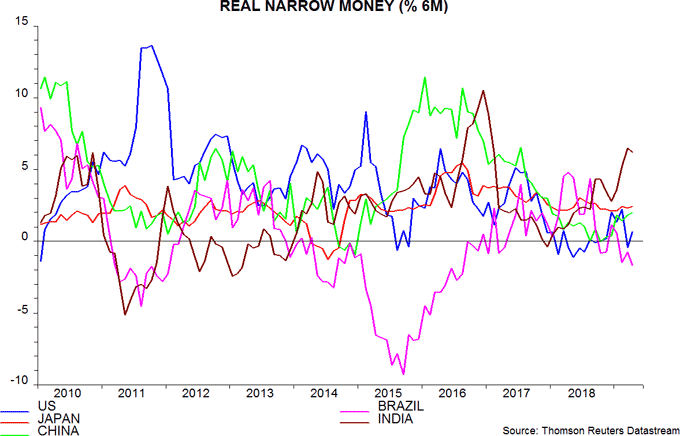Global six-month real narrow money growth appears to have recovered partially in April after a March relapse but remains weak by post-GFC standards – a much bigger pick-up is needed to signal an economic recovery, which, in any case, is unlikely before early 2020 at the earliest.
The US, Japan, China, Brazil and India have released April monetary data, together accounting for two-thirds of the G7 plus E7 aggregate tracked here. Assuming unchanged growth in other countries, and incorporating near-complete consumer price data, six-month real narrow money growth is estimated to have risen from 1.4% to 1.8% – see chart.

The April estimate compares with a low of 1.1% in October 2018 but is beneath the level in all but two months over 2010-17. The judgement here remains that a rise to 3% is needed to signal an economic recovery – a move through 3% occurred before all seven previous rebounds in global economic momentum since the 2008-09 recession.
The April increase mainly reflected a recovery in US six-month real money momentum, which had turned negative in March. Chinese and Japanese growth was up slightly on the month, while Indian (strong) and Brazilian (weak) momentum softened – second chart. The final April number will depend importantly on Euroland money data released on 28 May.

As previously discussed, US and Chinese April industrial output data released last week suggest that six-month G7 plus E7 momentum turned negative in April – the final data point in the first chart assumes that output in the other countries rose by 0.5% month-on-month.
Current global industrial weakness is comparable to 2011-12 and 2015-16. The view here has been that this downturn would be the most severe since the 2008-09 recession; with the stockbuilding cycle downswing only now reaching its maximum intensity, this forecast appears on track.